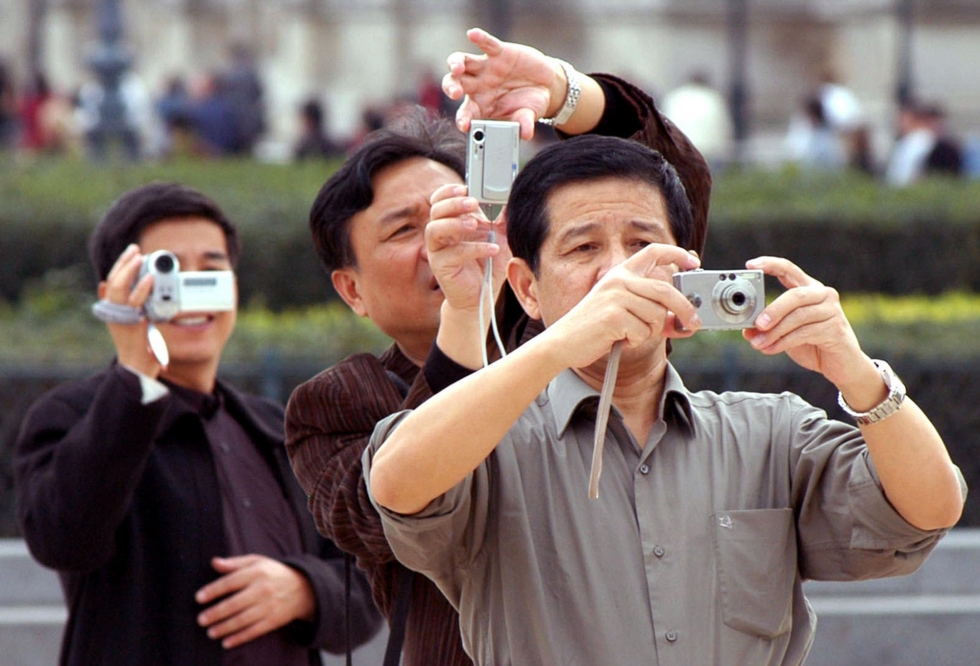The number of Chinese tourists in Southeast Asia is rising rapidly, but
unforeseen incidents remain a challenge for the tourism industry
By Joe Freeman
Back in May, when the Thai military declared martial law, detained government officials and announced a coup d’état, governments in the region, especially those that share a border with Thailand, were put in the awkward position of having to cooperate with the new junta.
Cambodian tourism officials, however, were nervous about a different, though related, problem: Would the Chinese stop visiting? “We are worried about the access to Cambodia,” said Kong Sophearak, director of the statistics and information department at Cambodia’s Ministry of Tourism.

In recent years, Chinese tourists have been travelling to the Kingdom in greater numbers than ever before. Then the coup happened, and it caused a slowdown in the rapid growth.
“The increase is slow,” Sophearak added, referring to the fact that the Chinese are still arriving, but not in the same numbers. According to the ministry’s figures, from January through April in 2013, the numbers were up nearly 60% compared to the same period in 2012. From January through April this year, however, the rise was only about 18%.
“The slowdown, I think, may be because of the access from Thailand and Vietnam,” Sophearak said. “I think that’s one reason.”
Thailand and Cambodia, due to their proximity to each other, are major markets for Chinese travellers in the region. Phuket, Bangkok and Chiang Mai were all listed among their top 20 destinations in a 2013 survey from TripAdvisor in conjunction with its Chinese travel website DaoDao.
Cambodia’s Siem Reap, home of the Angkor Archeological Park, is another hotspot and experienced more than fourfold year-on-year growth from Chinese travellers, according to the data.
But if something happens in one country, the other may be affected, impacting a vital source of tourism revenue. Cambodia and Thailand aren’t alone. The entire world wants a piece of the Chinese tourism market, which flows mostly from the mainland.
In 2012, the world’s second-largest economy pushed past the US and Germany to become the largest source of travellers globally by expenditure, according to the UN’s World Tourism Organisation.
Rising incomes, inexpensive holidays, changing travel routines and booming airline industries put Asean countries in a unique position to benefit from the surge in travel. By 2030, nearly half of all international passenger traffic will be confined to the Asia-Pacific region, according to the Boston Consulting Group (BCG), up from 37% today.
“Travellers from China will account for the lion’s share of this growth, plus about 40% of Asian outbound travellers by 2030,” the consultancy said in a report. “Chinese urban travellers took about 500 million domestic and outbound trips (excluding day trips) in 2012, spending about $260 billion.” By 2030, those numbers will increase to 1.7 billion trips and $1.8 trillion in expenditures, BCG said.
The TripAdvisor survey shows that more and more Chinese tourists are selecting Asean destinations for their holidays. On its top-20 list, nine were in the bloc’s member states.
Unintentional publicity can help. Last year, Thailand experienced a surge in travel from China due to the popularity of a Chinese film, Lost in Thailand, that was set there. But other countries have not missed out on the boom. Singapore, Indonesia, the Philippines, Vietnam and different destinations in Malaysia also featured on the list.
Southeast Asian countries “are likely to benefit as more travellers shift from sightseeing types of trips and concentrating in downtowns or popular tourist spots to relaxation and outdoor trips ‘off the beaten path’,” said Vincent Lui, partner and managing director at BCG.

“Chinese consumers will increasingly seek out destinations that offer natural sceneries to relax and recharge in. Younger generations are also more adventurous and active,” he added. “The growth trend is likely to continue [to be] driven by consumer income growth and people’s desire to travel and have more vacations.”
On the flipside, publicity can also be a hindrance. Two months after Malaysia Airlines flight MH370 disappeared on March 8, the Malaysian government’s slow-footed response angered the relatives of the many Chinese passengers who were on board, and travellers vowed to stop visiting the country. Accordingly, the Chinese tourist numbers, which normally account for 12% of Malaysia’s international travellers, fell 30%, the Wall Street Journal reported.
Last year, 1.35 million tourists from mainland China made their first stop in Malaysia, making it the fourth most popular destination in Asean, according to the China National Tourism Administration, which recorded a nearly 27% year-on-year increase in the region on average.
It is undeniable that Chinese tourism is important to economies in Southeast Asia, said Dee Suvimol Thanasarakij, Asean’s Tourism Marketing Coordinator. The year-on-year increase reported by China’s tourism administration shows that countries in the region “have gained more interest from [the] Chinese market.”
“While the government in each Asean country has its own strategies to tap into [the] Chinese market, the ten member states work together to promote Asean as one integrated tourism destination in various markets, including China which is one of our key focuses,” she added.
To spur visitor numbers from the Middle Kingdom even further, Asean has launched an official tourism website in Chinese as well as an account on Sinaweibo.com, the Chinese version of Twitter. Established in 2011, the Asean-China Centre, an intergovernmental organisation, is also committed to facilitating tourism in the region.
Cambodia is doing more than most of its peers to attract Chinese tourists. Part of the government’s strategy is to attract more than one million visitors per year by 2020. This may be doable; about 460,000 Chinese tourists arrived in 2013, according to official statistics, and tourism planners are intent on building at least one Chinatown that will encompass Chinese restaurants and stores.
But Phnom Penh’s booming business culture is already on the ball, with restaurants catering to the Chinese, such as Fu Lu Zu at the Sofitel and the large eatery opposite the Chinese embassy, already popular with visitors.
With political climates in several Asean countries at low points, Cambodia may be better poised than most to capitalise. “Facing the recent situation of some countries, Cambodia is leading,” said So Mara, a secretary of state at the Ministry of Tourism, though he stopped short of calling it an opportunity, since the slowdown has affected Cambodia too.
The coup and the protests that led up to it in Thailand, by far the largest tourism market with more than four million mainland Chinese travellers making their first stop there last year, has already scared off visitors and operators. Malaysia still has not found flight MH370 and lost another jet with the number MH17 as it was shot from the skies over Ukrainian-Russian war-torn territory.
Most recently, Vietnam, which saw more than 1.7 million Chinese tourists make their first stop there in 2013, slightly edging out Cambodia, exploded with anti-Chinese sentiment over a standoff in the South China Sea.
Ang Kim Eang, president of the Cambodia Association of Travel Agents, or CATA, said that Chinese tourists who want to holiday in Southeast Asia are running out of options.
“You look in the region, OK, South China Sea crisis, Chinese tourists are not visiting Vietnam. There’s a coup in Thailand, scaring Chinese tourists as well,” he said. “You look in the east and the west and there is a problem. So you have to visit Cambodia because they have no place to go.”


